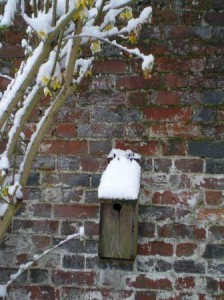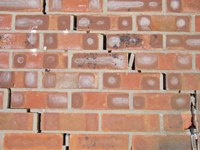 With weather warnings announced for snow in parts of south Wales, the southwest of England and with a small fluttering of snow on cars this morning here in Berkshire, it’s forecast that we’re in for another cold snap this week.
With weather warnings announced for snow in parts of south Wales, the southwest of England and with a small fluttering of snow on cars this morning here in Berkshire, it’s forecast that we’re in for another cold snap this week.
A survey last year showed that over three million of us suffered damage to our homes in the winter freeze of 2010/2011. The extreme winter weather that occurred between October 2010 and February 2011 damaged 6% of all homes in the UK.
Often the biggest damage caused is the result of escape of water caused by frozen and burst pipes. Extreme cold can cause internal and external water pipes and drainage systems to freeze up, when this happens the water in the pipes expands and can cause the pipes and fittings to split or burst open. When the frozen water melts, damage becomes obvious as water leaks out of the system.
Leaking water can cause severe damage to properties. There is potential for ceilings to hold water, causing bowing and the possibility that the ceiling could collapse. Plaster may become soft and fall apart once it gets soaked with water. Floors, stairs and timber joinery often swell, disintegrate and can rot if left. Tiles, paint and wallpaper can crack, lift, and peel off when water gets behind.
If you find yourself the victim of such water or flood damage, it’s likely you’ll need to make an insurance claim.
Once you put in your claim, an inspection will be required to assess the damage to your property. A detailed inspection is not something that a loss adjuster is always fully qualified to do and while your insurance company may offer you their in-house surveying service, it’s worthwhile knowing that you are not beholden to use their services. You are entitled to appoint your own independent building surveyor to assess, specify, tender and oversee reinstatement works. In our experience you will receive a far higher level of service when you use an independent construction professional to act as your project manager.
The independent and impartial expertise of RMA Surveyors Ltd, chartered building surveyors, can determine the real extent of the damage to your property and ensure that your home is reinstated to a professional standard. If you are comprehensively insured there should be no direct cost to you.
If the cold weather results in you having to submit a claim, then contact us. We’ll be pleased to look at your claim and offer an initial free consultation. We have a proven track record in getting insurance claims moving and homes reinstated professionally and efficiently.
Richard Mountain MRICS
HOW TO PREVENT FREEZING PIPES
It’s never too late to go about protecting your home from the extreme cold weather. Why not implement these ideas to help prevent pipes from freezing:
– Lag exposed pipes with insulation
– Install loft and cavity wall insulation (special attention should be taken over pipes in loft spaces)
– Stop any dripping taps and valves, the water could freeze in the waste or overflow pipe and cause a blockage
– Keep your property warm, and if you are going away consider leaving the heating on low
– Try to stop any draughts
– Make sure you know where your stopcock is, should you need to turn off your water supply





